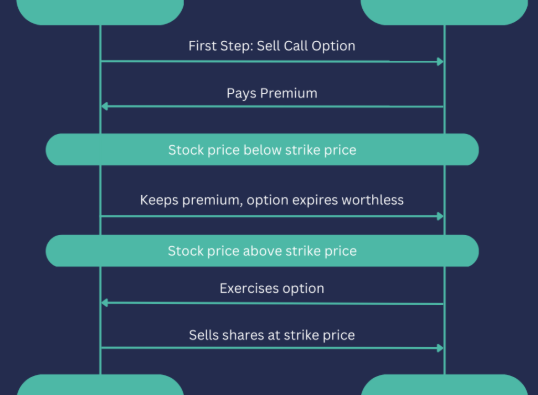
Companies that generate profits often reward their shareholders through dividends. Among the different types of dividends, interim dividends are one form that’s distributed before the annual financials are finalized. These payments are usually made at intervals throughout the fiscal year and can provide investors with early returns on their holdings. Let’s explore what interim dividends entail, how they differ from final dividends, and how to calculate them.
What Is an Interim Dividend?
An interim dividend is a payment made to shareholders before a company declares its final annual dividend. It’s typically distributed during the fiscal year, often quarterly or semi-annually, depending on the company’s policies and financial performance. These dividends are usually smaller than final dividends and serve as a partial distribution of profits.
A company can pay an interim dividend out of the profits from the current year or from accumulated earnings of previous years. Shareholders listed on the company’s register as of the record date are eligible to receive this payment.
How Interim Dividends Work
Dividends represent a portion of a company’s profits that are shared with its shareholders. Unlike final dividends, which are paid once a year after financial statements are approved at the annual general meeting (AGM), interim dividends can be issued without shareholder approval. These payouts are typically approved solely by the board of directors.
Companies might issue interim dividends to signal strong performance or to offer some liquidity to shareholders between annual distributions. The amount is generally lower than the final dividend to maintain flexibility for year-end financial planning.
Cash vs. Stock Interim Dividends
There are two main types of interim dividends:
- Cash Dividends: These involve direct payments to shareholders, usually per share held. For example, receiving ₹5 per share if you own 100 shares results in a ₹500 payout.
- Stock Dividends: Instead of cash, companies may distribute additional shares to existing shareholders. This does not reduce their overall stake but increases the number of shares they own.
The method of payment depends on the company’s liquidity, earnings, and dividend policy.
Examples of Interim Dividends
Imagine a company that had a particularly strong first half of the year. It might choose to reward shareholders by issuing an interim dividend of ₹2 per share. If profits continue to rise, the company may declare another interim dividend before the fiscal year ends, or reserve the remaining earnings for the final dividend.
These early distributions can provide much-needed cash flow to investors, especially in times when regular income sources may be unstable. However, interim dividends don’t typically accumulate the way final dividends might be expected to.
Interim Dividend vs. Final Dividend
The key differences between interim and final dividends lie in their timing, approval process, and frequency:
- Interim Dividend:
- Paid during the financial year
- Requires board approval only
- Typically smaller in amount
- May be issued multiple times annually
- Final Dividend:
- Paid after the fiscal year ends
- Requires shareholder approval at the AGM
- Usually larger and based on audited financials
Together, these two types of dividends reflect a company’s ongoing commitment to rewarding shareholders.
Calculating an Interim Dividend
To calculate an interim dividend, companies usually set a per-share amount. For instance:
Interim Dividend = Dividend per Share × Number of Shares Held
If a company declares ₹1.50 as an interim dividend and you own 500 shares, your payout would be ₹750.
Boards might adjust the interim dividend based on available profits and future financial expectations. In years where profits are uncertain, companies may lower interim dividends to preserve capital.
Tax Treatment
Interim dividends are taxed in the year they are received. They are treated as income for the shareholder and must be declared when filing taxes. In India, these are included under “income from other sources” and taxed according to the investor’s applicable tax slab.
Timing of Dividend Distributions
Firms may choose to pay dividends at two points in a fiscal year:
- Before the AGM – This is the interim dividend.
- After the AGM – This is the final dividend, declared based on the audited accounts of the previous financial year.
While interim dividends don’t require shareholder consent, final dividends do. Both offer financial returns, but they serve different strategic and financial purposes for the company.
Does a Company Have to Pay Dividends?
No law mandates a company to pay dividends annually. It’s entirely at the discretion of the board and depends on profitability, cash reserves, and strategic needs. Some companies prefer to reinvest their earnings to fund expansion, rather than distribute them.
Pros of Paying Interim Dividends
- Attracts Investors: Regular payments indicate financial stability.
- Income Stream: Shareholders receive steady returns even if stock prices fluctuate.
- Boosts Confidence: Dividend announcements can signal strong future performance.
- Use of Surplus Funds: Idle cash can be returned to investors when not needed for immediate business purposes.
Potential Downsides
- Reduces Retained Earnings: Less capital is available for reinvestment or debt repayment.
- Restricts Growth: Repeated payouts may hinder long-term expansion.
- Investor Expectations: Shareholders may expect consistent dividends, even in lean years.
- Administrative Burden: Managing frequent dividend distributions requires accurate and timely record-keeping.
Final Thoughts
Interim dividends provide shareholders with early access to a portion of the company’s earnings and are an important part of many firms’ capital allocation strategies. While not guaranteed, they offer insight into management’s outlook and the firm’s financial health. For investors, understanding how and when these payments are made—and how they differ from final dividends—can help shape a smarter investment approach.









